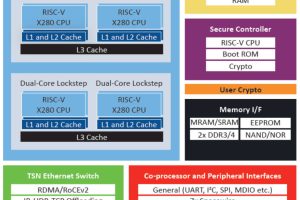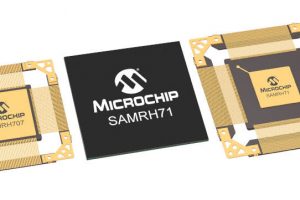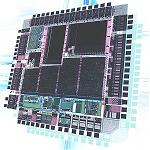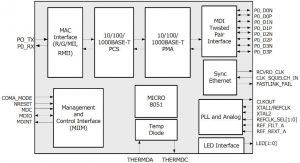
Called VSC8541RT, according to Microchip it is a single-port Gigabit Ethernet copper PHY with GMII, RGMII, MII and RMII interfaces.
Radiation performances is: latch-up-immune to 78Mev and TID tested up to 100Krad.
A second version,VSC8540RT, it bit-rate limited to 100Mbit/s and also comes in plastic and ceramic qualified versions.
Rad-tolerant MCU
To drive that, Microchip already has a radiation qualified microcontroller with an Ethernet controller: SAM3X8ERT.
Based around an Arm Cortex-M3 core, it is rated at 100DMIPS and has up to 512Kbyte of dual-bank flash, 100kbyte of SRAM, an ADC, a DAC, dual CAN controller and the Ethernet controller.
This can share the same software development tools with the firm’s other rad-hardened MCUs: SAMV71Q21RT (Arm Cortex-M7 up 600DMIPS) and ATmegaS128/64M1 (8bit).
On the subject of development, the standard Arduino Due (which is built around the SAM3X8E) can be used for SAM3X8ERT software development, as well as Atmel Studio IDE.
An evaluation board for the VSC8541EV Ethernet transceiver is available.
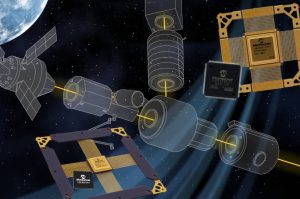 Applications for the radiation tolerant parts are foreseen in launch vehicles, satellite constellations and space stations.
Applications for the radiation tolerant parts are foreseen in launch vehicles, satellite constellations and space stations.
“Ethernet is becoming more common in spacecraft to enable hardwired communication speed, support higher data rates, and facilitate interoperability between satellites and other spacecraft,” according Microchip. “Both devices are COTS-based parts with enhanced characterised levels of radiation performance and high reliability quality flow, available in plastic and ceramic packages. They share the same pin-out, allowing designers to begin implementation with COTS devices before moving to space-grade components.”
VSC8541RT is sampling in ceramic prototype to space grade ceramic and high reliability plastic packages – CQFP68.
SAM3X8ERT is available in production quantities – in ceramic prototype to space grade ceramic and high reliability plastic packages – QFP144.
 Electronics Weekly Electronics Design & Components Tech News
Electronics Weekly Electronics Design & Components Tech News
